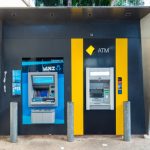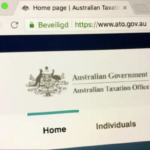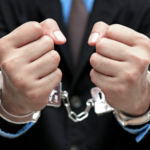The Offence of Fraud: Companies Generate Billions Without Criminal Consequences

This is the first in a series of 3 articles on the criminal offence of fraud.
This article will focus on the history of fraud, and outline the conduct of those who engaged in the offence in what is arguably the first global financial crisis.
It will then outline examples of those who brazenly committed the most egregious examples of systemic fraud (costing the public billions of dollars) repeatedly getting away with their crimes, with corporations described as ‘too big to fail’ paying these fines on their behalf and thereafter patting them on the back for the enormous profits they generated.
Monetary transactions
Even before cash was around, the offence of fraud as it does today involve an act for gain by using a form of deceit. Ancient Egypt was a cashless society until 525 BCE when the Persians arrived introducing the barter system based on a monetary unit called a ‘deben’. There was no actual coin but the monetary value was at that time universally accepted.
This didn’t stop fraud from being committed however as grain being taxed by collectors was manipulated causing the vendors to overpay the true tax. Around the same time (300 BCE) a Greek merchant called Hegestratos was caught by his crew attempting to sink his ship to claim amongst other benefits, a form of insurance. This was one of the first reported offences of fraud which didn’t end well for the offender as he drowned trying to escape the angry crew.
A bad year for Roman emperors
193 AD was the year of the largest fraud known, certainly for that period of time. The Praetorian Guard was an elite division of the imperial Roman army involved in assassinating emperors of the Roman empire and selling the ‘Rights’ to the ‘Roman Throne’ for cash worth in excess of 28 million drachmas arguably worth between 50 million and one billion dollars in today’s money (though this is disputed on several fronts). The new Emperor was assassinated within a short period of time with the next emperor executing the Praetorian Guard members responsible for the fraud. The Praetorian Guard had a habit of assassinating emperors having executed 5 or 6 during the course of time.
Famous historical actors
Sculptor, architect and poet Michelangelo born in 1475 in his younger years was party to selling a forged sculpture to a cardinal of the Catholic church who incidentally brought him to Rome where his career flourished.
Sir Isaac Newton an English mathematician, physicist, astronomer, theologian and Master of the Royal Mint in 1699 pursued and prosecuted forger William Challoner for a fraud involving 30,000 British pounds. The penalty was death by hanging.
World’s first global financial crisis which also involved a King
The Act of British legislation which led to arguably the world’s first financial crisis of 1720 was caused by a series of massive frauds by many high-ranking politicians.
In return for a loan of £7 million to finance the war against France, a Bill named the South Sea Bill was passed by the House of Lords in the UK Parliament. This permitted the South Sea Company as it was called, a monopoly to trade with South America in return for also underwriting the entire British national debt of £30 million. The company was rumoured to be worth approximately several hundred million dollars then, its worth today would have been the equivalent of more than four trillion dollars.
It should be noted that the South Sea company was initially formed in London in 1711 with one of the aims to provide just short of 5,000 slaves to Spanish plantations in Central and South America. It was also intended for Britain to increase its trade in the Americas.
The political chicanery
Involved in this deal were in excess of 400 members of the House of Commons and 100 Peers of the British Empire, the Chancellor of the Exchequer, Secretary of State, the Postmaster-General and King George 1 who had become Governor of the company in 1718.
The Chancellor of the Exchequer and a number of parliamentarians were expelled from parliament after a parliamentary inquiry. Those who invested and lost much of their wealth included countesses, duchesses. bishops, all sorts of people from the relatively poor to the gentry. Even Sir Isaac Newton lost a small fortune.
As a result of multiple episodes of fraudulent activity including bribes to several parliamentarians, the South Sea Company collapsed with the directors arrested and their estates forfeited. Many investors became destitute virtually overnight with the Postmaster-General committing suicide by taking poison and suicides becoming a regular occurrence.
As a result of the financial centres of Europe being interlinked, many European countries suffered from the fallout.
The Global Financial Crises of 1772, 1825, 1929 and 2008 amongst other financial crises appear to indicate that history repeats itself, perhaps even on a much grander stage on each occasion.
The great stock exchange fraud of 1814
This involved a hoax that Napoleon 1 had been killed and peace had been declared during the Napoleonic Wars, sending Government Securities Stock soaring in the London Stock Exchange.
An investigation revealed that there had been a massive sale of £1.1 million (worth in excess of £100 million today) of two Government stocks with Lord Cochrane, a politician and two military personnel convicted and imprisoned.
There was a soldier, a Scottish soldier
General Gregor MacGregor, a Scottish soldier claimed to be the ruler of a fictional Central American sovereignty called Poyais. He also claimed to be the Casique which is a Latin American native chief.
Investors were led to believe that Poyais had fertile land with a river where gold could be mined including plentiful fish & wildlife and an established capital city called St Joseph. From 1821 to 1837 he lured French and British settlers who invested in this elaborate fraud.
Indeed, approximately 250 migrated to Poyais only to be greeted by dense jungle where about half did not survive as most were elderly and expecting to retire. Due to the ships that they had arrived on being destroyed in a hurricane, they were stranded succumbing to yellow fever and malaria.
The British financial panic which didn’t affect Australia
Such was the dire effect on the Bank of England at that time, created partly as a result of general speculative investments in Latin America including MacGregor’s mythical land of Poyais where therein followed a stock market crash.
This was given the name of ‘The Panic of 1825’ and saw 12 British banks collapse which led to the restructure of the British financial system, the first of several over the subsequent two centuries. It did create issues in Europe, Latin America and the United States of America.
Whilst anything significant which occurred in Great Britain generally had a flow on effect in Australia, at that time though, Australia was far enough removed and somewhat regarded as just a penal colony that Britain’s crash had no affect. Although that would soon change once enough professionally qualified convicts such as clerks, accountants, bank workers and tradesmen had been released from sentence.
As free men in private employment, they would add to the growth of an independent Australian economy. It would only be then that Britain’s financial woes could be seen to affect Australia such as that caused by the various stock market crashes through the years with the inherent fraud that precipitated some of the reasons for such crashes.
Selling the Eiffel Tower
Self-proclaimed Count Victor Lustig was an accomplished fraudster in 1925 falsely represented himself as acting on behalf of the French Government and convinced a company to purchase the Eiffel Tower for US$70,000. Indeed, it is claimed that he sold it twice. He committed many such audacious frauds, once being sentenced to 20 years in Alcatraz prison after a vast counterfeiting scheme which threatened the U.S. economy.
Securities Exchange Company headed by Charles Ponzi also in the 1920s and whose offending coined the modern term, Ponzi Scheme was associated with many more fraud offences and is regarded as one of the more infamous fraudsters. He received 14 years imprisonment for his crimes. Those who used his criminal scheme in the future did not fare so well in terms of imprisonment.
Counterfeit god
Canadian Frank Bourassa known as the counterfeit god is acknowledged as the world’s largest counterfeiter who was arrested in 2012 by the U.S Secret Service after forging US$250,000,000. He received a prison term of only 6 weeks after handing over US$200,000,000 in counterfeit US20 bills to the authorities.
Massive global corporation frauds
The early 2000s saw the collapse of 3 global companies, WorldCom, Enron and Madoff Investment Securities LLC, with a combined loss to investors of US$212 Billion and combined terms of imprisonment in excess of 200 years.
Mr Madoff himself, received a sentence of 150 years.
The fraud that threatened the environment including Australia
Australia’s highest court denied Volkswagen in April 2021 leave to appeal against a $125 million penalty imposed after action by the Australian Competition and Consumer Commission (ACCC) that Volkswagen had breached Australian consumer law in 2019. In that year Volkswagen had admitted making false and misleading representation about the importation into Australia of 57,000 vehicle resulting in the Federal court awarding the $125 million penalty. Although it is possible that the number of vehicles in Australia affected by Volkswagen diesel emissions was 91,000.
The Volkswagen scandal from 2008 to 2015 saw only somewhat lower-level staff receive prison terms, leaving more senior decision-makers unscathed according to prominent legal experts. It is to be noted however that the fraud related trial of a former chief executive was delayed due to ill health.
The company paid US authorities US$25 Billion in fines, civil damages and restitution for a plea of guilty in US Courts for violating environmental law with 590,000 vehicles breaching the Clean Air Act and resulting in a €1 Billion fine in Germany for fraud. The general consensus of many jurists and expert observers associated with the case agreed that those at the helm of Volkswagen had come out of a horrendous crime, virtually unscathed.
For close to 10 years, multiple illegal levels above the Government mandate, of 2 types of poisonous nitrogen oxides from diesel vehicles sold in the United States were dissipated into the atmosphere. A further 8 million with the same fraud having been perpetrated, were sold in Europe.
Volkswagen admits to in excess of 11 million vehicles had the offending devices which involved the lawsuits and penalties and that 20 European Union countries were involved.
Global health experts including governmental environment, land and water department studies suggest that such volumes had the possibility to increase smog, respiratory infections, asthma and premature death. No less than that, indeed many medical experts have suggested it will result in 1200 deaths in Europe with each person losing as much as a decade of their life. The number of US deaths is estimated at approximately 60 with Australian calculations undetermined as yet.
Germany does not extradite citizens to face charges to countries outside the European Union.
Australian frauds perpetrated by personalities
Famous Australians imprisoned for fraud include an eclectic group of well-known personalities whose names and exploits were known throughout the world.
From Chinese born Australian Rene Walter Rivkin, famous stockbroker and adviser to Laurie Connell who was chairman of Rothwell’s bank, from former Premier of Western Australia Brian Burke to Christopher Skase who was Australia’s most wanted fugitive and the list goes on.
America’s Cup yachting legend and Channel 9 Television company owner including founder of Bond University Alan Bond to engineer, pilot and executive director of the National Safety Council of Australia (NSCA) John Friedrich.
Several of them left both good and bad legacies of their lives as Australians.
Rene Rivkin, youngest member of the Sydney Stock Exchange was born in Japanese-occupied China and persevered to become a respected stockbroker before his fall from grace. He passed away in 2005.
Alan Bond, London born business entrepreneur brought joy to a nation (Australia) in 1983 which had suffered great tragedy as a result of the Ash Wednesday bushfires which killed 72 people and razed 2,000 homes to ashes. He had spearheaded the America’s Cup yacht challenge where the Americans had never been beaten in the 132 years history of the event.
This prompted Bob Hawke who had recently won the Australian election to state to the nation as Prime Minister that any boss who sacked an employee for taking the day off work to celebrate, was a bum!
Mr Bond who went on to found Bond University and donated a significant amount of money to charity passed away in 2015.
John Friedrich, engineer and executive director of the NSCA who despite an earlier colourful past went on to work with the Uniting Church on Aboriginal Missions, sometimes paid work but not always.
Mysteriously, Friedrich was attached to the Australian Government and spent time as a Coastal Watcher for the Royal Australian Navy. He went on to do his master’s degree in engineering science and did voluntary work overseeing the rebuilding of Mornington Island which Cyclone Ted had devastated, destroying 90% of all homes and outbuildings.
In 1977 he began work at the (NSCA) as an engineer and through time it became a reputable search and rescue organisation. He was awarded the Medal of the Order of Australia.
His fraud was alleged to be in the region of $300,000,000, which he had borrowed from 27 banks to purchase aircraft, boats and vehicles for the NSCA. He even purchased a mini-submarine.
Who was the real John Friedrich?
There is strong anecdotal evidence that Friedrich was a Central Intelligence Agency (CIA) operative and that the NSCA which worked with the Australian Military was a front for the CIA.
What makes this version of Friedrich’s story all the more compelling is that he lived a modest life in a modest farm near where he spent most of his time at the NSCA. Mr Friedrich fearing being incarcerated and subsequent deportation committed suicide prior to standing trial for fraud.
So, while this SCL article has pointed out the good things that the convicted and alleged fraudster did, it in no way mitigates the harm done to those families who undoubtedly suffer in myriad ways from the frauds perpetrated by fraudsters…………except perhaps in the case of Mr Friedrich.
Present day fraud
Through the centuries, fraud has always increased in terms of types and frequency of such offences. Modern technology has introduced more intricate ways to be deceptive and commit fraudulent offences.
In the year 1800, the world’s population was 954,000,000.
In 1900, it was 1,654,000,000.
In 2000, it was 6,114,000,000.
In 2010, it was 6,922,000,000.
In 2020, it was 7,794,798,739
In 2022, it is 8,000,000,000
(According to recent United Nations predictions)
Obviously, this represents more victims and more perpetrators.
The Australian Cyber Security Centre (ACSC) state that in excess of 76,000 incidents of cybercrime were reported in the 2022 annual cyber threat report. This report specifies such attacks were carried out by governments and criminals on all levels of Australian government agencies – large organisations – critical infrastructure providers – small to medium enterprises – families and individuals.
The loss associated with cybercrime for the last financial year was $33 billion with fraud by way of online shopping and online banking at the top of the list, which of course involves identity theft. These matters will be discussed in episode 2 of this series.
Legal implications whichever side of the fraud equation you may be on
Whether you are a victim of one of the many offences constituted by fraud or indeed an alleged perpetrator of any such offences, you will require the services of a lawyer. It is a complex area of the law with expert legal advice necessary to enable you to navigate towards a successful outcome.
Equally important, may well be if you suspect you are about to become a victim of a fraudulent act. If so, you should contact a lawyer to discuss this.
In New South Wales, matters relating to fraud come under section 192E of the Crimes Act 1900.






